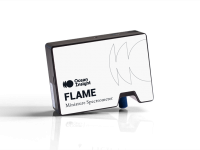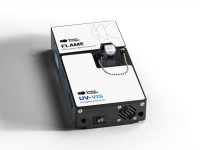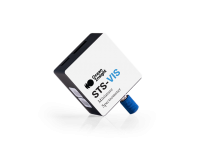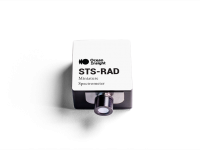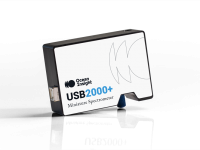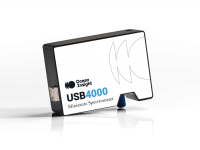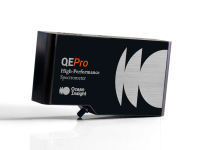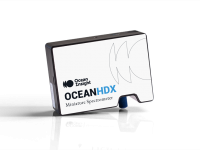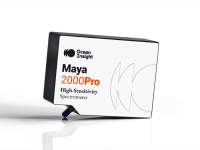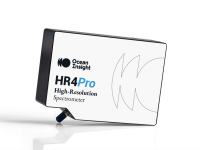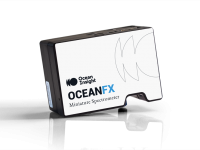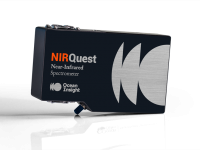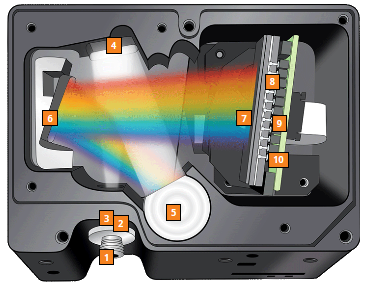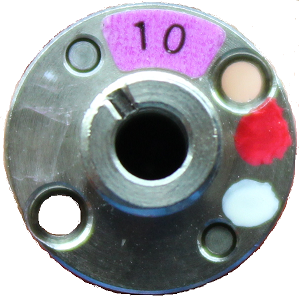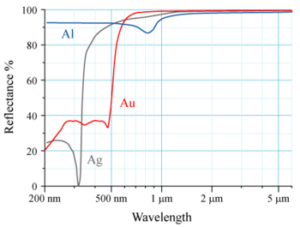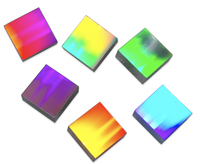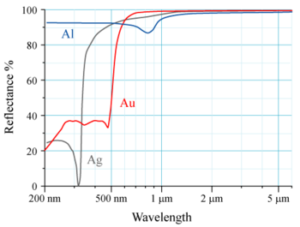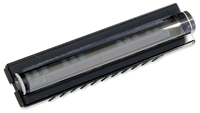General Purpose & OEM Spectrometer
Versatile UV-Vis and NIR Spectrometers
High Performance Spectrometer
Super-fast, High Performance Spectrometers
High Speed Spectrometer
Super-fast, High Performance Spectrometers
NIR Spectrometer
Near Infrared Spectrometers
Raman Spectrometer
We offer Raman spectrometer setups that can be optimized to your excitation wavelength and range, resolution and sensitivity requirements.
Flame Spectrometer
A great example of the modular spectrometer can be seen in the Ocean Optics Flame Spectrometer which employs the classic model of modular design and build to order options that let you optimize the system to best meet your needs. Better manufacturing techniques, faster, quieter electronics and even greater modularity are incorporated.
The legacy of this approach goes back to the original S1000 spectrometer invented in 1992. With the options now available, the number of primary model variations is 4,680. If we include the option of starting wavelength, the number of variations grows even bigger. We set out to build Flame spectrometers that could meet ANY need, and we come very close to meeting that goal.
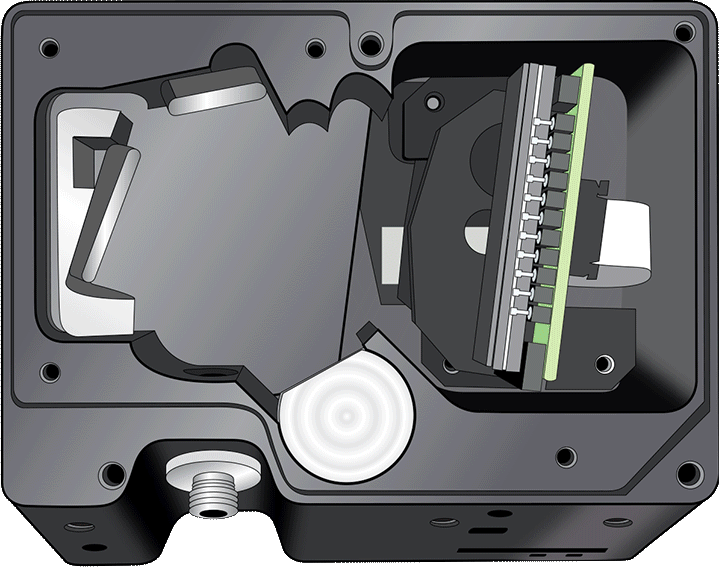
Fiber Optic Port
Light from a fiber enters the optical bench through the SMA 905 Connector. The SMA 905 bulkhead provides a precise location for the end of the optical fiber, slit, absorbing filter and fiber clad mode aperture. While we supply SMA connectors as standard, FC connectors are also available. We also offer a screw on lens to convert the optical fiber port into a free-beam port on this Flame spectrometer.
Interchangeable Slit
Light passes through the installed slit, which acts as the entrance aperture. Slits come in various widths from 5 µm to 200 µm. The slit is fixed in the SMA 905 bulkhead to sit against the end of a fiber. Smaller slit sizes achieve the best optical resolution while larger slits have higher light throughput. The slit size of our Flame spectrometer is labeled as shown.
| Slit | Description | Pixel Resolution |
|---|---|---|
| INTSMA-5 | 5-µm wide x 1-mm high | ~3.0 pixels |
| INTSMA-10 | 10-µm wide x 1-mm high | ~3.2 pixels |
| INTSMA-25 | 25-µm wide x 1-mm high | ~4.2 pixels |
| INTSMA-50 | 50-µm wide x 1-mm high | ~6.5 pixels |
| INTSMA-100 | 100-µm wide x 1-mm high | ~12 pixels |
| INTSMA-200 | 200-µm wide x 1-mm high | ~4.2 pixels |
| INTSMA-25 | 25-µm wide x 1-mm high | ~24 pixels |
| INTSMA-000 | Interchangeable bulkhead with no slit | NA |
| INTSMA-KIT | Interchangeable SMA Kit connectors; 5µm; 10µm; 25µm; 50µm; 100µm and 200µm | NA |
Ocean Optics also offers a range of FC connector slits in the same slit widths, with the product code INTFC-XXX. An INTFC-KIT is also available. Note that these items are made to order and have a longer lead time.
Longpass Filter
| Item Code | Description | Dot 1 | Dot 2 |
|---|---|---|---|
| OF1-BG28 | Bandpass filter, transmits >325 and <500 nm | Blue | Red |
| OF1-WG305 | Longpass filter; transmits light >305 nm | Black | White |
| OF1-U325C | Bandpass filter, transmits >245 and <390 nm | White | Green |
| OF1-GG375 | Longpass filter; transmits light >375 nm | Red | Black |
| OF1-GG395 | Longpass filter; transmits light >395 nm | White | Red |
| OF1-CGA420 | Longpass filter; transmits light >420 nm | Orange | White |
| OF1-GG475 | Longpass filter; transmits light >475 nm | Green | Green |
| OF1-OG515 | Longpass filter; transmits light >515 nm | Pink | Yellow |
| OF1-OG550 | Longpass filter; transmits light >550 nm | Orange | Orange |
| OF1-OG590 | Longpass filter; transmits light >590 nm | Red | Pink |
| OF1-RG695 | Longpass filter; transmits light >695 nm | White | Blue |
| OF1-RG830 | Longpass filter; transmits light >830 nm | Black | Blue |
| OF1-CGA1000 | Nonfluorescing longpass filter, transmits >1000 nm | Red | Green |
| OF1-CGA760 | Nonfluorescing longpass filter, transmits >760 nm | Blue | Black |
| OF1-CGA780 | Nonfluorescing longpass filter, transmits >780 nm | White | Yellow |
| OF1-CGA830 | Nonfluorescing longpass filter, transmits >830 nm | Green | Orange |
| OF1-CGA475 | Nonfluorescing longpass filter, transmits >475 nm | Yellow | Pink |
Collimating Mirrors standard or enhanced
SAG+ mirrors are often specified for fluorescence. These mirrors absorb nearly all UV light, which reduces the effects of excitation scattering in fluorescence measurements. Unlike typical silver-coated mirrors, the SAG+ mirrors won’t oxidize. They have excellent reflectivity — more than 95% across the VIS-NIR.
Fixed Gratings, Range & Resolution
Flame and USB Series Custom Configured Gratings and Wavelength Range
Gratings for Ocean Optics spectrometers are permanently fixed in place at the time of manufacture to ensure long-term performance and stability. Choose from among multiple gratings for your custom configured Flame spectrometer. When selecting your grating, consider groove density (resolution), spectral range (wavelength range) and blaze wavelength (determines the most efficient range). We offer ruled and holographic diffraction gratings. Holographic gratings produce less stray light while ruled gratings are more reflective, resulting in higher sensitivity.
| Grating Number | Intended Use | Groove Density | Allowable Start Wavelength | Typical Spectral Range*(nm) | Blaze Wavelength | Best Efficiency (>30%) (nm) |
|---|---|---|---|---|---|---|
| 1 | UV | 600 | 150-400 nm | 700-670 | 300 nm | 200-575 |
| 2 | UV-VIS | 600 | 150-400 nm | 700-670 | 400 nm | 250-800 |
| 3 | VIS-Color | 600 | 300-500 nm | 680-660 | 500 nm | 350-850 |
| 4 | NIR | 600 | 400-700 nm | 670-630 | 750 nm | 530-1100 |
| 5 | UV-VIS | 1200 | 150-250 nm | 325 | Holographic UV | 200-400 |
| 6 | NIR | 1200 | 425-880 nm | 320-250 | 750 nm | 500-1100 |
| 7 | UV-VIS | 2400 | 150-350 nm | 170-140 | Holographic UV | 200-500 |
| 9 | VIS-NIR | 1200 | 330-600 nm | 325-300 | Holographic VIS | 400-800 |
| 10 | UV-VIS | 1800 | 150-510 nm | 235-175 | Holographic UV | 200-635 |
| 11 | UV-VIS | 1800 | 320-800 nm | 210-110 | Holographic VIS | 320-720 |
| 12 | UV-VIS | 2400 | 150-640 nm | 170-70 | Holographic VIS | 260-780** |
| 14 | NIR | 600 | 450-725 nm | 670-630 | 1000 nm | 650-1100 |
| 31 | UV-NIR | 500 | 150-250 nm | 925 | 250 nm | 200-450 |
* Spectral range will be smaller when starting wavelength is longer. Spectral range also depends on exact spectrometer model.
** For applications >720 nm, please consult an Application Sales Engineer.
Groove Density:
The Groove Density (mm-1) of a grating determines its dispersion, while the angle of the groove determines the most efficient region of the spectrum. The greater the groove density, the better the optical resolution possible, but the more truncated the spectral range.
Spectral Range
The dispersion of the grating across the linear array; also expressed as the “size” of the spectra on the array. The spectral range (bandwidth) is a function of the groove density and does not change. When you choose a starting wavelength for a spectrometer, you add its spectral range to the starting wavelength to determine the wavelength range. For several gratings, the Spectral Range of a grating varies according to the starting wavelength range. The rule of thumb is: the higher the starting wavelength, the more truncated the spectral range.
Blaze Wavelength:
For ruled gratings, the Blaze Wavelength is the peak wavelength in an efficiency curve. For holographic gratings, it is the most efficient wavelength region.
Best Efficiency (>30%):
All ruled or holographically etched gratings optimize first-order spectra at certain wavelength regions; the “best” or “most efficient” region is the range where efficiency is >30%. In some cases, gratings have a greater spectral range than is efficiently diffracted. For example, Grating 1 has about a 650 nm spectral range, but is most efficient from 200-575 nm. In this case, wavelengths >575 nm will have lower intensity due to the grating’s reduced efficiency.
Focusing Mirror - standard or enhanced
This mirror focuses first-order spectra on the detector plane. Both the collimating and focusing mirrors are made in-house to guarantee the highest reflectance and the lowest stray light possible. You can opt to install a standard Al or special coated Ag (SAG+) mirror. As with the collimating mirror, the mirror type needs to be specified when ordering.
Cylindrical Detector Collection Lens
Detectors: Sony or Toshiba
There are two choices of detector available for the Flame spectrometer. We offer a 2048-element FLAME-S (Sony ILX511B) or a 3648 element FLAME-T (Toshiba TCD1304AP) linear CCD array. These both have an effective range of 190-1100 nm. The optics split the light into its component wavelengths which fall across the different pixels. Each pixel responds to the wavelength of light that strikes it. The detector outputs an analog signal from each pixel that is converted via the ADC into a digital signal. The driver electronics process this signal and send the spectrum via the USB connection to the software. The best choice of detector will depend on the application.
| Specification | S Type (FLAME-S) | T Type (FLAME-T) |
|---|---|---|
| Detector: | Sony ILX511B linear silicon CCD array | Toshiba TCD1304AP linear silicon CCD array |
| Strengths: | Strong response < 350nm, good for UV measurements. Fast data output rate. Larger pixel size improves sensitivity | Slightly higher SNR due to well depth Larger number of pixels can offer better resolution with small slits. Electronic shutter |
| Watch for: | N/A – Offers strong all-around performance | Signal lag at low integration times Signal may bleed to neighboring pixels at high intensities (blooming) Higher minimum integration time |
Detector specifications sheets:
OFLV Linear variable detector order sorting filters
Our proprietary filters precisely block second- and third-order light from reaching specific detector elements. Light reflected off the grating can propagate 2nd and 3rd order effects at whole multiples of the incident light wavelength. So, for example, 250nm light hits the first order position at 250nm, and the second order position at 500nm. While 2nd order is generally weaker than first order signals, they are troublesome when looking at broad band spectra. Order sorting filters reject this stray light only allowing the desired 1st order wavelength through to the detector.
Order sorting filters are installed on detectors and are listed in the detector selection pane below. They are only available at set wavelength ranges, as the filters have to be fabricated to align all the proper blocking bands to specific ranges on the detectors. These must be specified at the time of ordering.
Detector, OFLV and window (UV or VIS) Options
| Detector | Description | Spectrometer |
|---|---|---|
| DET2B-200-535 | Sony ILX511B detector, installed, with Custom OFLV Coated Window Assembly for Grating#5 and Grating#5U, S-bench | FLAME-S |
| DET2B-200-850 | Sony ILX511 detector, installed, with 200 – 850 nm variable longpass filter and UV2 quartz window; Best for UV-VIS systems configured with Grating #1 or #2 | FLAME-S |
| DET2B-200-1100 | Sony ILX511 detector, installed, with 200 – 850 nm variable longpass filter and UV2 quartz window; Best for UV-VIS systems configured with XR-1 grating | FLAME-S |
| DET2B-350-1000 | Sony ILX511 detector, installed, with 350 – 1000 nm variable longpass filter; Best for VIS systems configured with Grating #2 or #3 | FLAME-S |
| DET2B-UV | Sony ILX511 detector, installed, with UV2 quartz window; Best for systems configured for <360nm | FLAME-S |
| DET2B-VIS | Sony ILX511 detector, installed, with VIS BK7 window; Best for systems configured for >400nm | FLAME-S |
| DET4-200-535 | Toshiba TCD1304AP detector, installed, with Custom OFLV Coated Window Assembly for Grating#5 and Grating#5U, S-bench Toshiba TCD1304AP detector, installed, with 200 – 850 nm variable longpass filter and UV2 quartz window; | FLAME-T |
| DET4-200-850 | Toshiba TCD1304AP detector, installed, with 200 – 850 nm variable longpass filter and UV2 quartz window; Best for systems configured with Grating #1 or #2 | FLAME-T |
| DET4-200-1100 | Toshiba TCD1304AP detector, installed, with 200 – 850 nm variable longpass filter and UV4 quartz window; Best for systems configured with XR-1 grating | FLAME-T |
| DET4-350-1000 | Toshiba TCD1304AP detector, installed, with 350 – 1000 nm variable longpass filter; Best for VIS systems configured with Grating #2 or #3 | FLAME-T |
| DET4-UV | Toshiba TCD1304AP detector, installed, with UV4 quartz window; Best for systems configured for <360 nm | FLAME-T |
| DET4-VIS | Toshiba TCD1304AP detector, installed, with VIS BK7 quartz window; |


